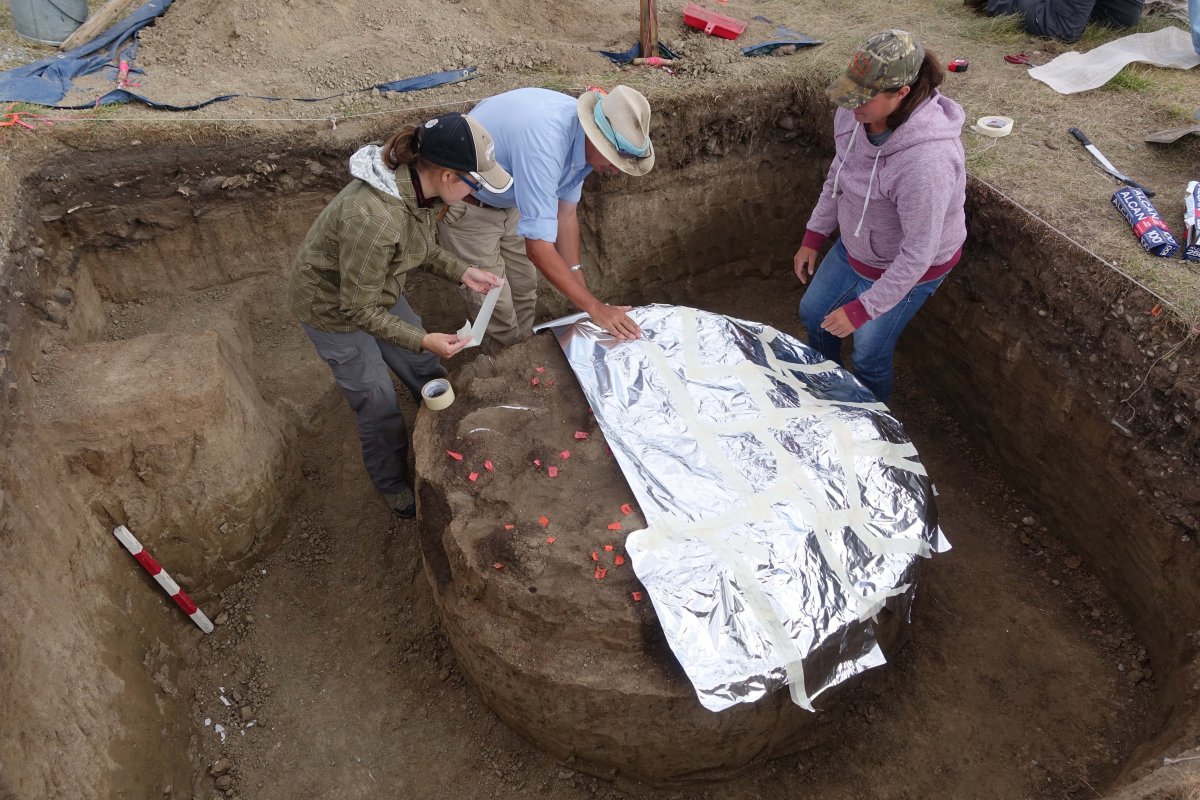Royal Alberta Museum archaeologists are about to start a lengthy and intricate process of figuring out what ancient Albertans cooked for supper.

Last year, they dug up a 1,600-year-old roasting pit at Head-Smashed-In-Buffalo Jump in southern Alberta. The oven was intact and still had a prepared meal inside, which could make it the only known artifact of its kind.
READ MORE: Royal Alberta Museum construction done, massive move up next
“Somebody — probably celebrating the success of a hunt — had a big feast afterward and prepared a bison calf and some kind of a dog, maybe part-wolf, in a pit side by side,” Bob Dawe, the Royal Alberta Museum’s lead archaeologist on the project, said.
“They roasted it overnight in the ground. It would have been a delectable feast in the morning.”
The roasting pit was first discovered in 1990, but archaeologists didn’t excavate it until last year, before packing it up and moving it to Edmonton.
READ MORE: Exploring the jewels kept out of sight at the Royal Alberta Museum
That process involved laying fiberglass-reinforced plaster strips all over it until they hardened. Dawe said when the plaster hardened, they could pick up the pit with a crane and put it on a truck bound for Edmonton. That was a lot of work, but there’s still a lot left to do.
“It looks like a 3,000-pound plaster lozenge, not quite two metres in diametre and about half a metre thick,” Dawe laughed.
“We retrieved this assembly of rocks and sediment and bones intact with some great difficulty.”
Dawe expects it to take months to cut off the top, scrape away the dirt, and carefully clean and preserve every bone. They want it ready to display when the new museum opens in downtown Edmonton later this year.
WATCH ABOVE: The Royal Alberta Museum is home to hundreds of thousands of treasures. Michel Boyer went on a tour part of the old museum that the public has never been before.
One of the barriers to the work will be psychological, since one set of remains belongs to a dog.
“A lot of dog-lovers are a little concerned that a dog was part of the meal, and as a dog lover myself I find that a little bit bothersome, but people have been using dogs as food in the Americas for 10,000 years and they still use dogs as food all over the world,” said Dawe.
“I have a dog, and I’m sure my dog would be unhappy to hear that I’m digging up one of his ancestors.”












Comments